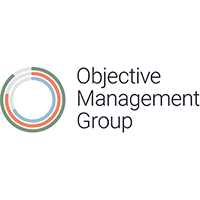 I’m a sucker for sports cars. If a car has two doors, sleek lines and a powerful engine it calls my name. One of my favorite cars was my Nissan 350Z-turbo-charged-anniversary-edition. I loved that car. Until two weeks into my new purchase.I was making a simple lane change on a Toronto highway and my rear mirror showed the road behind was open. A glance over my right shoulder confirmed I was clear to move and so, foot on the accelerator, I turned the wheel to the right. My stomach lurched at the jarring sound of someone’s hand hard on a horn behind me,followed by the acrid smell of rubber tearing on asphalt.
I’m a sucker for sports cars. If a car has two doors, sleek lines and a powerful engine it calls my name. One of my favorite cars was my Nissan 350Z-turbo-charged-anniversary-edition. I loved that car. Until two weeks into my new purchase.I was making a simple lane change on a Toronto highway and my rear mirror showed the road behind was open. A glance over my right shoulder confirmed I was clear to move and so, foot on the accelerator, I turned the wheel to the right. My stomach lurched at the jarring sound of someone’s hand hard on a horn behind me,followed by the acrid smell of rubber tearing on asphalt.
Another vehicle was within a millimeter of the passenger side of my new paintwork. The driver flipped me a familiar gesture. He was mad. I was shaken. He had missed me by a hair.
I found out later from a colleague who reads the consumer reports on new vehicles that, because of its sloped back, the 350Z has a wicked blind spot. Checking the rear mirror isn’t enough. Unless you literally twist yourself into a pretzel it’s impossible to see certain points outside the car. I was lucky. The quick reaction of the other driver prevented an accident that could have been devastating.
Blind spots are dangerous. And they are not unique to cars.
They can be particularly perilous for sales people. In the context of selling, a blind spot is something you commonly do within your sales interactions that potentially threatens your success. And here comes the kicker… you’re not aware of it.
Take Justin for example.
I am shadowing Justin on a sales call with a potential new customer. Justin is young, ambitious and bright. He is also genuinely interested in business and comes to the meeting armed with a handful of smart thought-provoking questions that I know will engage his customer.
During the call I notice a disturbing pattern. Justin asks a powerful question and then almost immediately, before the customer has a chance to respond, he provides his own answer. As this behavior repeats itself throughout the call, I realize that Justin is leaving the meeting with Justin’s perspective on this organization’s needs and not that of the customer.
When we sit down to debrief the meeting Justin is ecstatic. He feels he has a lot of valuable information that he can use strategically to move the sales process forward. I hate to burst his happy bubble but I have to ask, “Justin, are you aware that you just had a sales call with yourself?” I share my observations and follow them with, “Justin, what does the customer need to do when confronted with these big questions?”
“He needs to think.”
“And what happens when people are thinking?”
“They are silent.”
Click. The lightbulb is on. He realizes that his discomfort with silence, coupled with an empathetic need to help a customer struggling to find answers, is a self-defeating trait.
Blind spot eliminated.
A blind spot can also be in context of a positive behavior.This can be equally harmful to your quest for sales superstardom. Alan is thrown into training within months of starting his field sales career. On the last day of training he is required to role play, on camera, and following several considerably more seasoned colleagues. Serious pressure. Using the protocol learned in the three days of training Alan has 15 minutes to present his company’s capabilities to a fictitious executive, played by yours truly,and a middle manager played by a member of Alan’s leadership team.
At the end of the presentation the manager and I gape at each other. “Sold!” we say in unison. I turn to Alan. “Are you even remotely aware of how extraordinary that presentation was?” He isn’t. We’ve uncovered a blind spot.
With the help of his peers we walk him through his presentation, step by step, shining a light on specific actions and the impact of these on the two distinct levels of buyer. This newbie’s confidence soars. More importantly, this new-found awareness puts him in a position to ruthlessly leverage these strengths to outsell more experienced sellers in the real world. Imagine if he continued through the rest of his career unaware? What a crime.
Even the most experienced of us has blind spots. In fact, as the business environment continues to evolve, that experience can lead to blinkered vision.
So how do you avoid, or eliminate, your personal blind spots? While the answer is simple, the execution is often hampered by ego. So here are a handful of tips.
- Proactively and regularly solicit feedback on your sales approach at every opportunity and from multiple sources: Your manager, your peers, trainers and customers.
- Schedule regular “relationship meetings” with your best customers with the intent of obtaining feedback. Let them know your goal is continuous improvement and that you want candid input. Get clear on what you do well, what you need to differently or do more. And what needs to stop.
- Be open to hearing what is said even when you disagree. Do not be tempted to discount or defend. Listen from a place of curiosity. And thank each person for their support.
- Make time to reflect on the implication of their words. And then act.
Good selling!
Jill Harrington, President of salesSHIFT is a sales expert, speaker, trainer and president of salesSHIFT. She works exclusively with corporate sales teams and business owners who want bigger better faster sales. Jill provides the uncommon selling sense that will shift the way you think and maximize your influence, impact and income. View my Twitter






